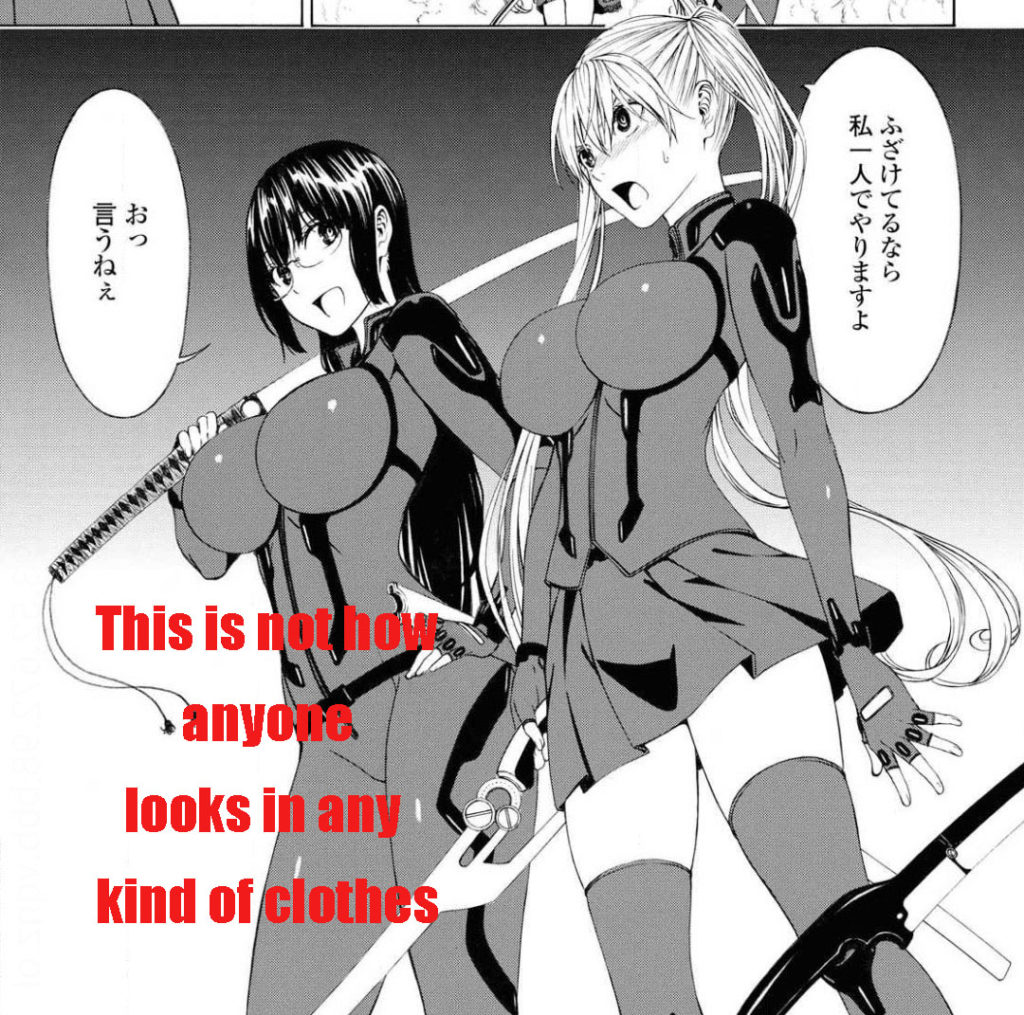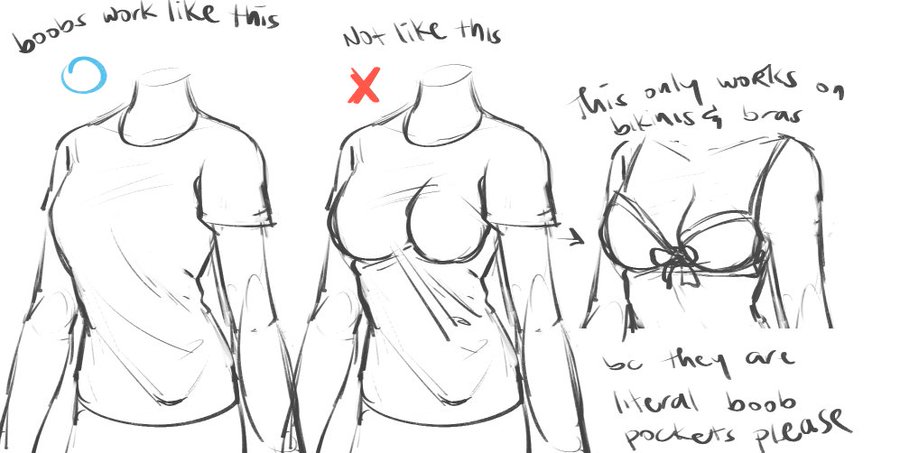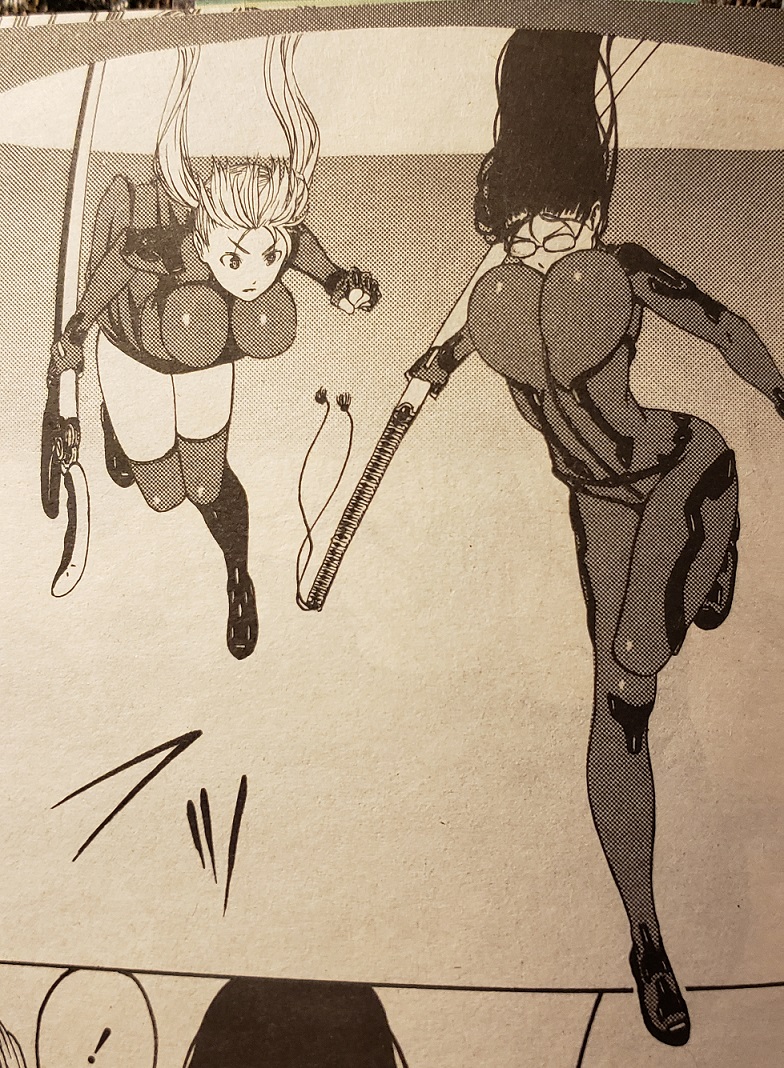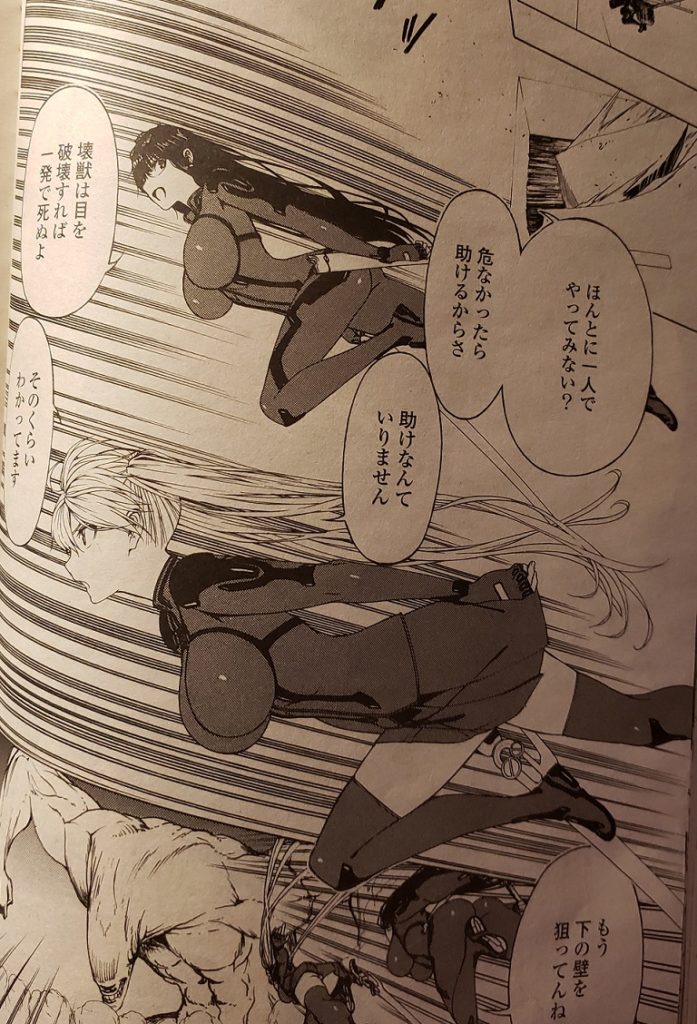I was all geared up today to write a review of Otherside Picnic, Volume 2, but there has been a lot of Twitter conversation that has dovetailed and I kind of want to put it all together in one place to point to later. I’m finishing up Comic Yuri Hime, February 2020 and I found myself torn between disgust and laughter at the the chapter of Ogino Jun’s “semelparous.” Both art and story are open to criticism, but the art is instantly deserving of mockery. There have been a number of conversations recently on Twitter about liking or being offended by art and I want to also add some very sincere – hopefully thought-provoking – thoughts about liking “problematic” art.
Let me start with liking “problematic” things. Lynzee Loveridge posted this tweet:
Yes, it is absolutely okay to like problematic things. But equally super important is recognizing that to other people that “problematic” thing might feel like an assault on their existence, so their *completely valid* reaction is strongly negative. For instance, when I write below about the ridiculous way in which women’s breasts were being depicted by a manga creator, I understand that there are people who enjoy that aesthetic. I do not feel attacked by absurdly drawn breasts, but I *understand* from many years experience, that the men who defend and demand that kind of art are exactly the kind of men who blame women for their own failures and who aggressively deny misogyny. As a result I do not believe that art deserves a place in Yuri Manga, a point I will get to.
So, let’s talk about tits. Tits do function a bit like water balloons, this is completely true. BUT WE HAVE UNDERWEAR. Women’s bras are specifically designed to offer support – which is to say, minimizing jiggling. Not to rob men of the pleasure of looking, but because breasts bouncing up and down hurt. Large breasts hurt more. They pull on back and chest muscles. Women with large chests need more support, more minimizing of movement. Active wear for women is specifically designed with this in mind. (In relevant news, the three women who invented the sports bra are being inducted into the Inventor’s Hall of Fame.)

I specifically looked for larger wetsuit sizes, so you could see how breasts are compressed more during activity, so they aren’t just banging around painfully. This is a 2X wetsuit.

In “semelparous” Ogino Jun draws women with exceedingly large breasts, that apparently have clothes sprayed on, without any underwear.

I can absolutely attest from personal experience with a large chest that this would be painful.
Immediately some people attempted to shame me for my mockery, as if art criticism doesn’t exist as a thing. ^_^ Of course what they were angry about was me not respecting their fetish. Sorry guys. I don’t. And I’ll tell you why in a second. But first, let’s review how breasts and clothes work:

This image is used with permission. The artist has specifically asked to remain uncredited.
So, when I was reading “semelparous,” Chapter 2 and saw these, I boggled (in a bad way.)


Now, here’s where I’m getting salty. Don’t bother complaining to me about it. You’re reading my blog. ^_^
The problematic part here is not that the artist likes large tits. It’s that he is uninterested in portraying tits correctly. Why is that problematic? That (and everything else about this story) indicates two clear and important points:
1) Women are basically tits and crotches with faces attached
2) Actual women’s bodies aren’t interesting to the creator.
Still, why is that problematic? you might reasonably ask me.
It is problematic because this comic runs in Comic Yuri Hime.
Comic Yuri Hime is a magazine with a majority female readership. This comic is insulting, to be honest, to women. It prioritizes their tits over everything and anything. Women, generally, are not made comfortable by that kind of fetishization.
Comic Yuri Hime is a magazine about Yuri, which ought, IMHO, to prioritize the interior lives of women and their experiences, showing them as fully formed individuals, rather than as tits with legs. Women shown existing for their own sake, not for men’s viewing pleasure.
“semelparous” is presumably meant to attract men to the readership of Comic Yuri Hime. I would be deeply offended at the presumption that only the hyper-sexualization of women’s bodies will attract me to enjoy a comic, if I were a man.
As a woman who actually enjoys women’s actual real-world bodies, I find this art deserving of no respect. I know no one on the editorial staff at Comic Yuri Hime cares what I think, or what any lesbian thinks, but I’m strongly put off by this (and a few other editorial choices, which are clearly pandering to not “to men” but to extreme fetishists among men…an audience I never think is worth courting.) I understand that this art takes skill to draw, which is why it seems intentionally insulting to women. The editorial staff could have said, “Well, yeah, we want to attract guys, but the majority readership is women, so let’s back off a bit on these tits.” They didn’t, which indicates that they don’t care if current subscribers are put off. That is an intentional transaction. “So what if we lose female readers or make them feel uncomfortable?” And that is, frankly, insulting.
In a world where women are mobilizing globally to make men aware of systemic misogyny and the impact on their lives, this kind of decision is troubling. One might have hoped that in the light of #KuToo, the editorial staff of the only monthly Yuri magazine might have decided that this kind of intentionally demeaning art was not a good choice. That they didn’t…is exactly the problem #KuToo is meant to highlight.
Misogyny does not belong in Yuri. I reject it. I hope you will too. I will be following this post up with a polite, but firm, letter to Comic Yuri Hime expressing my opinion. Feel free to write them and let them know you are not okay with this. Remember to be polite.
My point is…it’s up to us to think about the “problematic.” When we like a thing because it’s problematic – are we, in actual fact, just ignoring that it indicates attitudes and behaviors that are harmful to someone *else*? Because then the problematic thing…is us. Are you processing your own trauma, or exploiting someone else’s?
So go ahead and like your problematic thing, but consider thinking about why its problematic and what it says about you as a person. And don’t get all offended when someone calls you out. Your “problematic” may be their actual real-world problem.
![]() Last spring I took a look at a pleasant “opposites attract” school life Yuri romance by Ajiichi. In Volume 1, we met otaku Kurokawa Kaede and fashionable Fujishiro Nanaki who find themselves becoming friendly despite not being friends. Nanaki and Kaede’s friendship grows; typical of these kinds of stories, the fashionable girl takes the unfashionable girl for a makeover. Nanaki immediately questions the wisdom of this as Kaede ,starts being the subject of everyone’s attention.
Last spring I took a look at a pleasant “opposites attract” school life Yuri romance by Ajiichi. In Volume 1, we met otaku Kurokawa Kaede and fashionable Fujishiro Nanaki who find themselves becoming friendly despite not being friends. Nanaki and Kaede’s friendship grows; typical of these kinds of stories, the fashionable girl takes the unfashionable girl for a makeover. Nanaki immediately questions the wisdom of this as Kaede ,starts being the subject of everyone’s attention.

